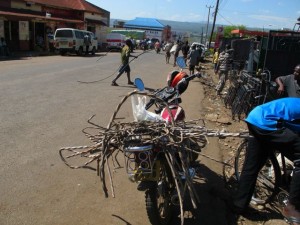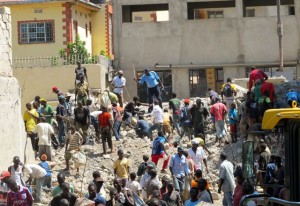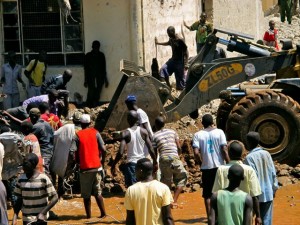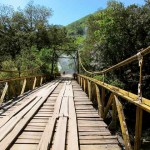CNN’s headline report on the collapsed building in Bangladesh, stated that such incidences are not an “isolated problem.”
Shoddy construction standards in the third world claim lives like any natural disaster, unfortunately. I witnessed a situation like this earlier this year when January, 16th a four story building under construction in the Kenya’s third largest city, Kisumu, collapsed, killing seven, injuring dozens, and trapping more than a dozen. According to Red Cross rescue coordinator, Willy Cheboi, as late as Friday voices could still be heard from survivors buried beneath the rubble.
The tragedy happened just a year after a similar incident in Mlolongo, Kenya occurred, prompting a national newspaper, The Standard, to call many buildings throughout the country “deathtraps”, with “60 percent of buildings in Nairobi bogus” signaling the fact that many developers employ substandard construction methods.
From 1999 to 2009 the populations of Kenya urban areas increased by 26 percent. Many cities are growing upwards instead of outwards. The collapsed building in in Kisumu was a five-story building being constructed on the foundation that originally supported a two-story building.
George Weda, a former city councilor running for a senate seat in the March elections, blames the collapse on a faulty foundation.
Prompted by the 2012 collapse of a building in Mlongo, measures have been passed to prevent such tragedies from reoccurring. The National Building Maintenance Policy 2012 is aimed at curbing the widespread incidence sub-standard building practices.
A survey of the scene on Friday showed rescue efforts still underway. As bulldozers and Red Cross workers cleared debris in an attempt to free trapped survivors, police chased away a mob of Kenyans brandishing hacksaws being used to cut loose rebar.
Trying to beat other scavengers vying for the same materials, many came inches from being run over by a bulldozer clearing the rubble—a reminder in this election year many impoverished Kenyans fight daily just to survive.
 This writer followed one motorcycle carrying the rescued materials to the industrial part of town where it was sold for a little over dollar to a blacksmith. Many here survive on less than $1 a day. In a macabre twist of fates, the collapsed building taking more than seven lives has provided some families with nourishment for another day.
This writer followed one motorcycle carrying the rescued materials to the industrial part of town where it was sold for a little over dollar to a blacksmith. Many here survive on less than $1 a day. In a macabre twist of fates, the collapsed building taking more than seven lives has provided some families with nourishment for another day.





